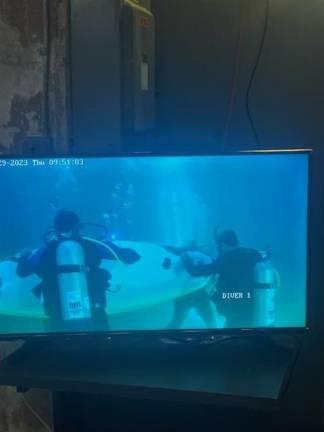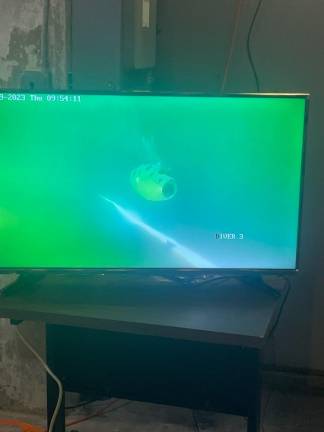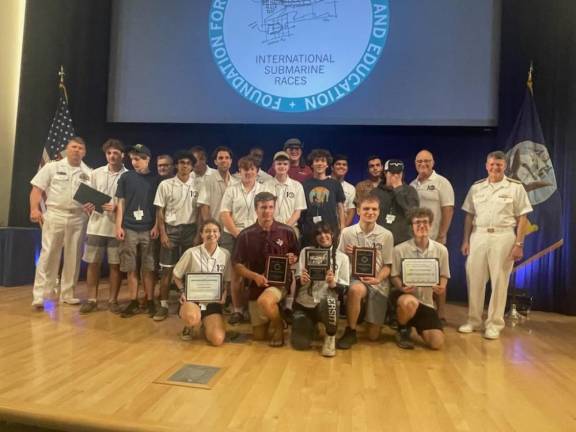Sussex Tech students compete in submarine races
SPARTA. Local high school team wins four awards at the 17th International Human Powered Submarine Races in Maryland.




Sussex County Technical School students competed in the 17th International Human Powered Submarine Races (ISR) from June 26-30.
They represented one of the three high schools among the 18 teams in the event, held at the Carderock Naval Surface Warfare Center in Bethesda, Md.
Other teams came from colleges in the United States, Canada, United Kingdom and Poland.
ISR is a premier engineering design/build competition that requires each team to fully design, document, manufacture and operate a fully functioning human-powered submarine at a depth of 20 feet under water.
Each team operates a submarine at the David Taylor Model Basin, which is a deep-water basin measuring a half-mile long by 51 feet wide by 22 feet deep housed in a building.
Virtually all U.S. Navy ships and submarines are modeled and tested extensively in this facility before being authorized for construction.
Four awards
Sussex County Tech took home four awards:
• Absolute Speed Award, which goes to the submarine team with the fastest speed of the race from any of the design categories. If the speed sets a new speed record, $500 will be awarded in addition to a plaque. The Sussex County Tech submarine, called Umptysquatch X, achieved a speed of 2.648 knots.
• The Patrona Corp. Best Use of Technology Award, given to the team in any design category that exhibits the best and most successful use of technology to support their vessel’s design, construction and/or performance. A plaque and $750 cash award went to Umptysquatch X for the successful development and use of an autonomous self-correcting buoyancy system.
• Fastest Speed by Category. Certificates are given to first-place and runner-up speed finishers in each design category. Umptysquatch X won in the One Person, Propeller, High School category.
• 2023 FURE Scholarship Winners. Awards of $2,000 each were made to Luis Villa Castro of Florida Atlantic University and Grace Revoredo, a 2023 graduate of Sussex County Tech. She will attend the Albert Dorman Honors College at New Jersey Institute of Technology in the fall. She will be pursuing a degree in chemical engineering.
The competition
During the week, each team attempts to complete the 100-meter straight-line course at the fastest speed possible. Each submarine is human-powered by a pilot inside the submarine.
By rule, all submarines must free-flood, requiring the pilot to breath from standard scuba equipment.
During the 2022-23 school year, seven Sussex Tech engineering students acquired their Open Water SCUBA certifications to support the project.
This was in addition to designing and fabricating the submarine, named UmptySquatch X.
Sussex Tech has been competing in ISR for the past 20 years. All of its submarines have been named UmptySquatch; this year’s entry was the 10th iteration.
To attempt a single “run” at the race course, five to six support divers must drag the submarine out to the race course from the staging area, then submerge it to the bottom of the 22-foot deep basin. The submarine hatch is then removed by the support divers and a signal is given to the pilot, who is floating on the surface with a buddy-diver to come down to the sub.
The support diver then escorts the pilot down 22 feet and over to the submarine, where the pilot must perform a regulator exchange and start breathing air from the submarine’s scuba tank.
Once the pilot gives a signal that everything is OK with the air source on the submarine, he is directed to enter the submarine. Once settled, he gives a signal to a support diver through the clear polycarbonate nosecone that he is OK, then the submarine’s hatch is installed.
The submarine is walked over to the starting line and a signal is given to the race course director that “Umptysquatch is Ready to Race.”
Once the race course is verified to be ready, the director communicates via underwater hydrophone to the team: “Umptysquatch, Umptysquatch, Umptysquatch ... Go, Go, Go.”
Then the pilot starts pedaling, the propeller starts rotating and the submarine starts moving forward. The pilot must attempt to finish the 100-meter course by himself.